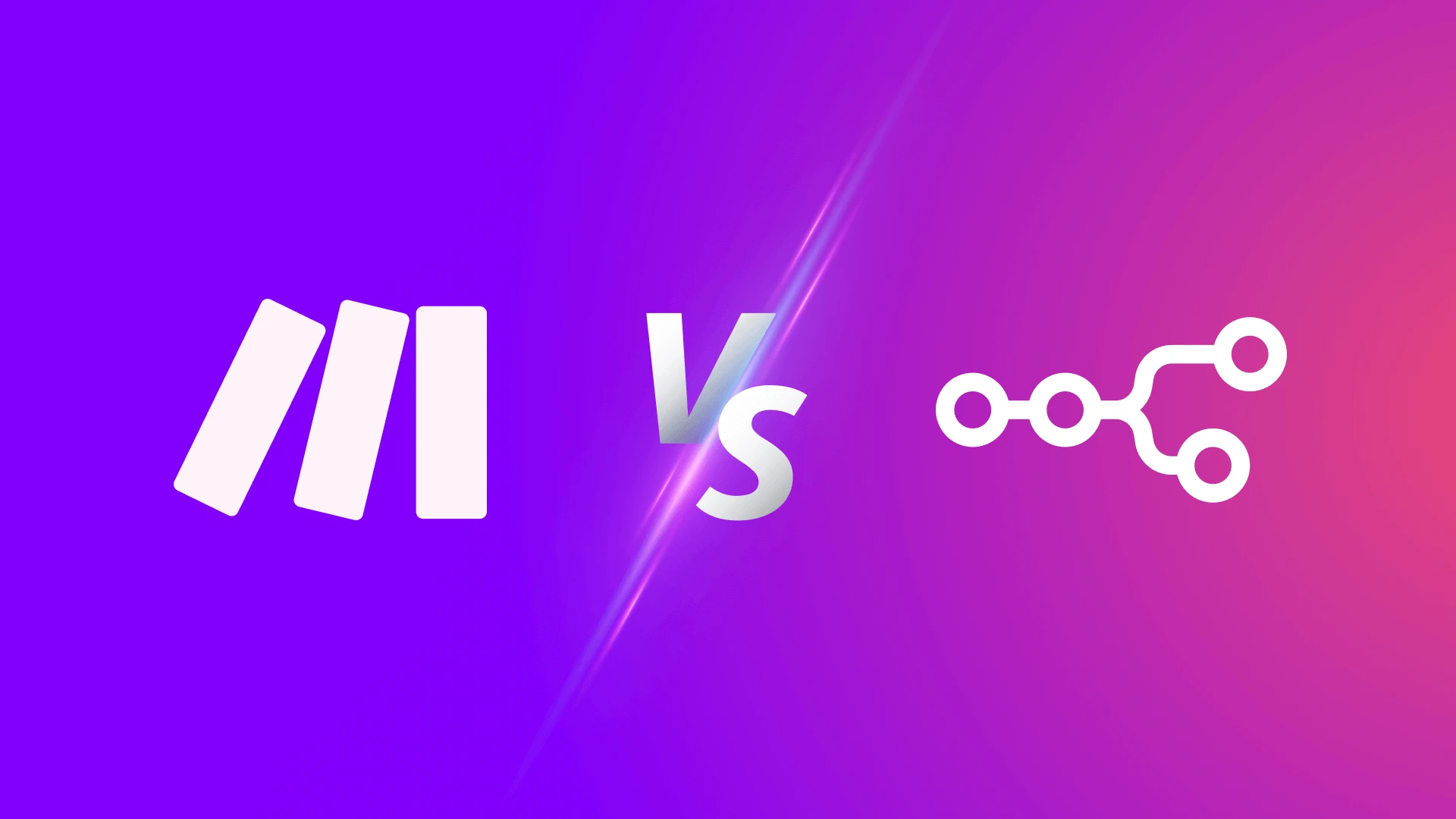N8n AI automation is transforming how businesses handle repetitive tasks through intelligent workflows that leverage machine learning algorithms. This comprehensive guide explores not only the capabilities of n8n’s powerful automation platform but also compares it with Make.com (formerly Integromat) to help you decide which solution best fits your needs. By examining their approaches to AI automation, interfaces, pricing models, and real-world applications, you’ll gain valuable insights into these leading workflow automation tools.
What is N8n AI Automation?
N8n is a fair-code workflow automation platform that enables users to connect different systems and automate complex processes through an intuitive visual interface. Originally called “nodemation,” n8n represents the newer generation of automation tools that combines powerful workflow capabilities with AI integration1. The platform stands out for its developer-friendly approach, flexibility, and open-source nature, allowing users to examine and modify the underlying code when necessary1.
Core Features of N8n
N8n’s architecture revolves around several core concepts that form the foundation of its automation capabilities:
- Visual Workflow Builder: Users create automations by dragging and dropping nodes onto a canvas and connecting them to visualize data flow1.
- Nodes: Each step in a workflow is represented by a node that handles specific tasks like pulling data from a database or sending information to a CRM1.
- Self-Hosting Capability: Unlike many competitors, n8n offers self-hosting options, giving organizations complete control over their data and infrastructure1.
- Open-Source Foundation: The open-source nature allows users to examine the code and customize functionalities according to their specific needs1.
- AI Integration: N8n provides robust support for integrating AI capabilities into workflows, particularly through its AI Agent node1.
What is Make.com?
In contrast to n8n, Make.com (formerly Integromat) has been in the automation space since 2012, positioning itself as a polished, user-friendly platform with an emphasis on accessibility for non-technical users1. Make.com offers a cloud-based solution that abstracts much of the technical complexity, allowing users to create sophisticated automations through a visually appealing interface1.
Make.com’s core architecture is built around:
- Scenarios: These are flowcharts of interconnected modules that define an automation workflow1.
- Triggers and Actions: Scenarios start with trigger modules that initiate the automation, followed by action modules that perform specific tasks1.
- Bundles: Data flows through modules in bundles, with each bundle representing a single data set (like one row from a spreadsheet)1.
- Operations: Each module execution consumes an operation, which is how Make.com measures usage and determines pricing1.
Make.com has established itself as a robust solution that prioritizes ease of use, extensive integrations, and a polished user experience, making it accessible to users with varying levels of technical expertise1.
How N8n AI Automation Works
N8n AI automation works by combining traditional workflow automation with artificial intelligence capabilities. The platform allows users to create workflows that can make decisions, process data, and take actions based on machine learning algorithms and AI models.
The N8n Workflow Architecture
When building automations in n8n, users work with:
- Inputs and Outputs: Data moves from one node to another through inputs and outputs, with each node processing data and passing results to the next node in the workflow1.
- Credentials: N8n securely stores API keys and login data, allowing nodes to connect to various services without requiring users to repeatedly enter authentication details1.
- Executions: Each run of a workflow is tracked as an execution, which can be manual (user-initiated) or automatic (triggered by events or schedules)1.
The platform provides a visual representation of data flows, enabling users to understand exactly how information moves through their automation processes1.
N8n’s AI Agents: The Game-Changer
One of the most significant advantages of n8n is its AI Agent functionality, which has contributed substantially to the platform’s recent growth1. N8n has built-in capabilities that allow users to connect AI models like GPT-4 to a collection of tools that they can select or create1. When an AI model receives a request or data, instead of simply responding, it can choose to use specific tools to fulfill the request1.
This approach transforms traditional workflows into intelligent systems where AI acts as a decision-maker in business processes. For example, an AI agent in n8n could analyze incoming customer emails, determine their intent, and automatically route them to the appropriate department or respond with relevant information1.
Make.com’s Approach to Workflow Automation
Make.com takes a different approach to automation, focusing on accessibility and user-friendliness. When creating scenarios in Make.com, users see a flowchart-like interface with colorful, modular blocks representing different services or functions1. Data mapping in Make.com is particularly intuitive—users can select data fields from one step and map them into the next step through a clean drag-and-drop interface1.
Make.com’s execution model is based on operations, where each module execution consumes an operation from the user’s monthly allocation1. While this approach simplifies usage tracking, it can lead to higher costs as automation complexity increases1.
Building AI Automations: N8n vs Make.com
Creating effective AI automations requires understanding the strengths and limitations of each platform. Let’s explore how n8n and Make.com approach the building process.
The N8n Building Experience
When you log into n8n, you’re presented with a simple canvas where “nodes” represent services, triggers, or workflow logic1. You connect these nodes with lines to visualize data flow, and each node handles steps like fetching data, parsing inputs, or sending data forward1. When you execute a workflow, n8n runs through the sequence and displays real-time logs showing exactly what happened at each node1.
Adding a new node in n8n is straightforward: you select from a growing list of integrations and configure your credentials1. If you can’t find a node for your specific service, you can use an HTTP request node or function node to create custom functionality1. This open architecture ensures you’re never completely stuck, although using these generic nodes requires more technical proficiency1.
N8n excels in error handling, making it relatively easy to branch workflows when nodes fail—a critical feature when automating complex processes that shouldn’t collapse at the first error1. However, the n8n interface feels more technical compared to Make.com, with a steeper learning curve for beginners1.
The Make.com Building Experience
Make.com offers a more polished interface with colorful, modular blocks representing different services or functions1. The platform’s mapping feature is particularly user-friendly, allowing users to select data fields from one step and map them into the next through an intuitive drag-and-drop interface1.
Debugging in Make.com is also user-friendly—users can run individual modules or entire scenarios step by step, with the platform showing exactly what data is traveling through each connection1. Logs are neatly organized, and users can replay scenarios with different inputs1. If something fails, Make.com typically points to the precise module and error message, saving time when troubleshooting complex scenarios1.
Make.com’s scheduling options are flexible, allowing users to run scenarios at various intervals or based on triggers1. Overall, Make.com wraps sophisticated automation capabilities in an approachable interface, though power users sometimes find certain aspects more rigid compared to n8n’s open architecture1.
Practical Example: AI Email Categorization
To illustrate the differences between n8n and Make.com, let’s examine how each platform would handle a common business need: categorizing incoming emails using AI1.
Most companies rely heavily on email communication, but managing high volumes of messages—especially in shared inboxes like contact@, info@, or hello@—can become overwhelming1. Automatically categorizing these emails using AI can significantly improve efficiency1.
Both n8n and Make.com can build this automation, but they approach it differently:
Implementation in N8n
In n8n, building an AI email categorization workflow involves:
- Setting up an email trigger node to monitor incoming messages
- Processing the email content through an AI service node (like OpenAI)
- Using function nodes or conditional logic to determine categories based on AI analysis
- Applying appropriate labels or routing emails based on categorization
- Optionally sending notifications or taking additional actions
N8n’s strength in this scenario is its flexible AI integration and ability to handle complex decision logic1. The platform’s AI Agent capabilities allow for sophisticated analysis and contextual understanding of email content1.
Implementation in Make.com
In Make.com, the same workflow would utilize:
- An email trigger module to watch for new messages
- API integration with an AI service
- Router modules to direct emails based on categorization
- Action modules to apply labels or forward messages
- Additional modules for notifications or follow-up actions
Make.com’s approach benefits from its intuitive interface and straightforward data mapping, though implementing complex AI logic might require more modules than n8n’s solution1.
Advantages of N8n AI Automation
N8n offers several significant advantages for organizations implementing AI automation:
Flexibility and Customization
N8n provides exceptional flexibility, allowing organizations to create custom automation workflows tailored to their specific needs1. The platform supports both no-code and code-based approaches, accommodating users with varying technical expertise1.
Self-Hosting Benefits
Self-hosting n8n offers several important advantages:
- Total control over sensitive data: Organizations can keep their data within their own infrastructure1.
- Lower latency in operations: Self-hosting reduces delays in workflow execution1.
- Reduced costs at scale: Self-hosting becomes more cost-effective as automation volume increases1.
- Compliance with data regulations: Self-hosting facilitates adherence to data protection laws1.
Advanced AI Capabilities
N8n’s AI Agent functionality allows for sophisticated AI integrations that can make decisions and take actions based on complex analysis1. This capability enables the creation of intelligent automation systems that go beyond simple rule-based processes1.
Cost-Effective Scaling
N8n’s pricing model, particularly for self-hosted deployments, allows for cost-effective scaling of automation workloads1. Unlike Make.com, where costs increase with each operation, self-hosted n8n can run virtually unlimited workflows for a fixed infrastructure cost1.
Advantages of Make.com
Make.com offers its own set of advantages that make it appealing for many users:
User-Friendly Interface
Make.com’s polished, intuitive interface makes it accessible to users with limited technical background1. The platform’s visual approach to automation design and data mapping simplifies the creation of complex workflows1.
Extensive Integrations
One of Make.com’s biggest advantages is its breadth of native integrations1. If the platform has a ready-made module for your service, connecting is straightforward and requires minimal configuration1.
Robust Community and Resources
Make.com benefits from a large user community and extensive documentation, providing new users with plenty of tutorials, templates, and pre-built scenarios1. This ecosystem allows users to get workflows up and running quickly without starting from scratch1.
Simplified Management
Make.com’s cloud-based approach eliminates the need for infrastructure management, reducing the technical overhead associated with automation deployment1. Users can focus on building and refining their workflows without worrying about server maintenance or scaling concerns1.
Financial Comparison: N8n vs Make.com
Understanding the cost implications of each platform is crucial for making an informed decision.
N8n Pricing Models
N8n offers two primary pricing approaches:
- Cloud-based: N8n’s cloud offering is priced based on workflow executions. For example, running an email categorization workflow 2,500 times would consume 2,500 executions, fitting within the Starter plan at €24/month1. However, this plan limits users to only 5 workflows, which can be a significant constraint for many organizations1.
- Self-hosted: When self-hosting n8n, users only pay for the server infrastructure, typically around $5-$10 per month depending on the provider (common options include Render, DigitalOcean, and EasyPanel)1. A basic server can handle 2,500 workflow executions easily, and potentially scale to 100,000 or more, with the primary limitation being server load during peak periods1.
The key advantage of n8n’s pricing model is how affordably it scales, particularly for self-hosted deployments1. As automation volume increases, costs remain relatively stable compared to operation-based pricing models1.
Make.com Pricing Structure
Make.com uses an operation-based pricing model:
- Each module execution consumes one operation from the monthly allocation1.
- For a scenario with 5 modules running 2,500 times, this would consume 12,500 operations (5 × 2,500)1.
- This would require the Core plan at $18.82/month for 20,000 operations1.
While Make.com can be more cost-effective than n8n’s cloud offering for simple automations with low volume, costs increase substantially as scenario complexity and execution frequency grow1. This scaling issue is one reason why experienced Make.com users sometimes transition to more developer-friendly options like n8n1.
Which Platform Should You Choose?
The choice between n8n and Make.com depends largely on your specific needs, technical expertise, and automation goals.
For Beginners and Non-Technical Users
Make.com offers a more accessible entry point to automation:
- Intuitive interface with minimal learning curve
- Extensive library of pre-built integrations
- Strong community support and templates
- Simpler authentication and connection process1
For those new to automation or without technical backgrounds, Make.com provides a smoother start and faster time-to-value1.
For Developers and Technical Teams
N8n aligns better with the needs of technical users:
- Developer-friendly approach with code integration options
- Self-hosting capability for data control and cost management
- Open-source foundation allowing customization
- Superior handling of complex workflows and AI integration1
Organizations with development resources or more complex automation needs will benefit from n8n’s flexibility and scalability1.
The Progression Path
Many users find value in starting with Make.com and transitioning to n8n as their skills and requirements evolve1. Since both platforms share similar automation concepts, knowledge transfers relatively easily between them1. This progression allows users to begin with Make.com’s accessibility and gradually move to n8n’s flexibility as their automation sophistication increases1.
Applications of N8n and Make.com AI Automation
Both platforms enable a wide range of automation applications across various industries:
Business Process Automation
- Customer onboarding and data management
- Invoice processing and financial workflows
- Employee onboarding and HR processes
- Inventory management and supply chain automation
Marketing and Sales
- Lead generation and qualification
- Customer data enrichment
- Multi-channel marketing campaign management
- Sales pipeline automation
Customer Support
- Ticket routing and prioritization
- Automated responses to common inquiries
- Customer feedback analysis
- Support SLA monitoring
Data Processing
- Data collection and centralization
- Report generation and distribution
- Data transformation and cleansing
- Business intelligence workflows
Challenges and Limitations
While both platforms offer powerful automation capabilities, they also have limitations to consider:
N8n Limitations
- Steeper learning curve for non-technical users
- Cloud version restricts users to only 5 workflows
- Self-hosting requires technical knowledge or resources
- Some users report a lack of real-time error notifications1
Make.com Limitations
- Operation-based pricing becomes expensive at scale
- More rigid when implementing complex custom logic
- Limited ability to customize beyond available modules
- Closed-source nature prevents deep customization1
The Future of AI Automation
As AI technologies continue to evolve, both n8n and Make.com are likely to expand their AI integration capabilities. N8n’s head start in AI Agent functionality positions it well for advanced AI use cases, while Make.com’s focus on accessibility will help bring AI automation to a broader audience.
The automation landscape continues to develop rapidly, with platforms increasingly incorporating AI capabilities to enhance workflow intelligence and adaptability. Organizations that invest in these technologies now will be well-positioned to leverage future advancements in AI automation.
Conclusion
N8n and Make.com represent two distinct approaches to AI automation, each with its own strengths and limitations. N8n excels in flexibility, customization, and advanced AI integration, particularly through its AI Agent capabilities, making it ideal for technical users and complex automation scenarios. Make.com prioritizes accessibility, user experience, and simplicity, offering a gentler entry point for automation beginners.
When choosing between these platforms, consider your technical expertise, specific automation needs, and long-term scaling requirements. Many users find value in starting with Make.com’s user-friendly approach and later transitioning to n8n as their automation needs become more sophisticated and their technical skills develop.
Regardless of which platform you choose, integrating AI into your automation workflows represents a significant opportunity to enhance efficiency, reduce manual effort, and create more intelligent business processes. As AI capabilities continue to evolve, both n8n and Make.com will likely expand their offerings, providing even more powerful tools for creating intelligent, adaptive automation solutions.
By understanding the strengths and limitations of each platform, you can make an informed decision that aligns with your organization’s specific needs and goals, setting the foundation for successful AI automation implementation.




